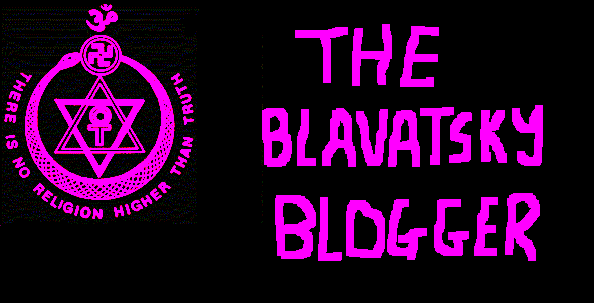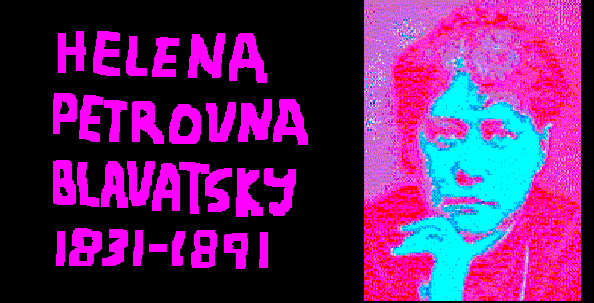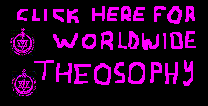
Taking Theosophical
ideas
into the 21st
century

Creating
your own After-Death State
Blavatsky
& Virgil
Posted

Publius Vergilius
Maro
aka Virgil 70 -19 BC
Born
in
Became
the official and compulsory poet of
The
I
have outlined here the H P Blavatsky view of the after death states and those
of Virgil expressed in Book 6 of the Aeneid. There are some surprising
similarities with a belief in reincarnation and the idea that you attract your
own suffering. Virgil describes something similar to the Christian concept of
Hell but like the Theosophical concept of Kama Loka, it is not eternal.
Virgil
and H P Blavatsky make reference to the animal kingdom which although separate,
experiences the same cycle of death and rebirth.
There
are, however, some notable differences. Blavatsky postulates a period of bliss
(Devachan) before for everyone before the return to physical life, even the
tormented souls are allowed this, after the period of suffering is over whereas
for Virgil’s tormented souls there is no such respite. They are simply rounded
up and sent back with their memories wiped clean.
Virgil
postulates a period of 1000 years between births, H P Blavatsky says that the
Devachanic State lasts for 10 to 15 centuries.
Blavatsky
refers to Devachan as the state after death of most mortals. Devachan for
Virgil is reserved for an elect few who have earned it with everyone else spending the inter life period
in miserable atonement or torment decreed by the life previously lived.
___________
Blavatsky’s
view
At
the point of physical death you get a free film show in the form of an
objective review of the life you have just led. You can expect the honest truth
here there’s no spin and no illusions.
H P Blavatsky describes this life review in this extract from The Key To Theosophy
“At the
solemn moment of death every man, even when death is sudden, sees the whole of
his past life marshaled before him, in its minutest details. For one short
instant the personal becomes one with the individual and all-knowing Ego. But
this instant is enough to show to him the whole chain of
causes
which have been at work during his life. He sees and now understands himself as
he is, unadorned by flattery or self-deception. He reads his life, remaining as
a spectator looking down into the arena he is quitting; he feels and knows the
justice of all the suffering that has overtaken him.”
The
mind at the point of physical death is important and attitude can have a
profound effect on your progress through the after death states. The attitude
of mind at the point of death and often the way death is faced is important in
many religions.
After
physical death you find yourself in the spirit realms (Kama Loka). You go into
a realm of your own creation and if you’ve lived a pretty mean life then you can
find your spirit realm a pretty mean unpleasant place and you can be stuck
there for a long time. Spiritually advanced people and all round good people
will move through Kama Loka fairly quickly and easily.
Kama Loka (Can be Hell, but not eternal)
For
people who have lived evil lives, Kama Loka is probably the closest thing that
Theosophy has to the concept of hell. It can last a long time but not forever.
Through
Kama Loka the individual loses all earthly characteristics and attachments as
the personality is dissolved. An essence of experience is distilled from the
life lived and the individual experiences another life review. The individual
is now ready to enter the second death (Devachan).
Devachan
is really a subjective state but a great state to be in. The individual is
surrounded by loved ones in ideal circumstances and positive aspirations of the
past life are fulfilled.
Unfortunately
Devachan can’t last. You have to leave and be born into another incarnation.
There is some choice about your new life based on what you need to learn but
you can’t be too choosy and have to take the most appropriate of what is
available.
As
you go back into reincarnation your last life can haunt you in the form of
Skandhas, which are attributes developed previously and carried forward.
From the The Key To
Theosophy
(The
Key to Theosophy is in the form of a dialogue with an enquirer)
On Kama Loka
Q. You
spoke of Kamaloka, what is it?
A. When
the man dies, his lower three principles leave him forever; i.e., body, life,
and the vehicle of the latter, the astral body or the double of the living man.
And then, his four principles-the central or middle principle, the animal
soul or
Kamarupa, with what it has assimilated from the lower Manas, and the higher
triad find themselves in Kamaloka. The latter is an astral locality, the limbus
of scholastic theology, the Hades of the ancients, and, strictly speaking, a
locality only in a relative sense. It has neither a definite area nor boundary,
but exists within subjective space; i.e., is beyond our sensuous
perceptions.
Still it exists, and it is there that the astral eidolons of all the beings
that have lived, animals included, await their second death. For the
animals it
comes with the disintegration and the entire fading out of their astral
particles to the last. For the human eidolonit begins when the
Atma-Buddhi-Manasic
triad is said to "separate" itself from its lower principles, or the
reflection of the ex-personality, by falling into the Devachanic state.
On Devachan
Q. But
what is Devachan?
A. The
"land of gods" literally; a condition, a state of mental bliss.
Philosophically a mental condition analogous to, but far more vivid and real
than, the most vivid dream. It is the state after death of most mortals.
Time
between births
Q. What of
the latter? How long does the incarnating Ego remain in the Devachanic state?
A. This,
we are taught, depends on the degree of spirituality and the merit or demerit
of the last incarnation. The average time is from ten to fifteen
centuries,
as I already told you.
Kama Loka as define by H P Blavatsky in her Theosophical
Glossary
Kamaloka
(Sk.). The semi-material
plane, to us subjective and invisible, where the disembodied “personalities”,
the astral forms, called Kamarupa remain, until they fade out from it by
the complete exhaustion of the effects of the mental impulses that created
these eidolons of human and animal passions and desires; (See “Kamarupa”.) It
is the Hades of the ancient Greeks and the Amenti of the Egyptians, the land of
Silent Shadows; a division of the first group of the Trailôkya. (See
“Kamadhâtu”.)
Theosophical
Glossary Index
A
B
C
D
EFG
H
IJ
KL
M
N
OP
QR
S
T
UV
WXYZ
________________
Virgil’s View as expressed in
The Aeneid
In the extract from the
Aeneid below, Aeneas (the central hero) is visiting the underworld where the
mysteries of life and death are being explained to him by his late father,
Anchises.
His
father mentions the point of death and suggests that there is some possibly to
repent for evil committed but many are beyond redemption and incapable of this.
There is no mention of review of the
past life.
Anchises
explains the unity of life and that the power that gives life to animals and
man is the same force. There is however no confusion between the animal and
human kingdom with no suggestion that man can be relegated to animal status.
This agrees with the Theosophical view that man remains man.
A
select few are rewarded for a good life by being allowed to wander the fields
of Elysium (Heaven) and to cleanse their souls of imperfections in their own
time. This is similar to moving up through the Astral levels quickly and easily
and there is a suggestion of Devachan (period of bliss).
Other
are punished according to what they have done in life and Anchises seems to
suggest that by the inherent evil they have acquired in life these souls bring
the commensurate punishment on themselves. They have created their own hell.
There is no Devachan or state of bliss for this group before returning to Earth
life. Their memories are wiped clean after 1000 years of suffering and they are
rounded up on the banks of the river Lethe and sent back to physical life.
From the Aeneid
BkVI:724-751
The Transmigration of Souls
‘Firstly, a
spirit within them nourishes the sky and earth,
the watery
plains, the shining orb of the moon,
and Titan’s
star, and Mind, flowing through matter,
vivifies the
whole mass, and mingles with its vast frame.
From it come the
species of man and beast, and winged lives,
and the monsters
the sea contains beneath its marbled waves.
The power of
those seeds is fiery, and their origin divine,
so long as
harmful matter doesn’t impede them
and terrestrial
bodies and mortal limbs don’t dull them.
Through those
they fear and desire, and grieve and joy,
and enclosed in
night and a dark dungeon, can’t see the light.
Why, when life
leaves them at the final hour,
still all of the
evil, all the plagues of the flesh, alas,
have not
completely vanished, and many things, long hardened
deep within,
must of necessity be ingrained, in strange ways.
So they are
scourged by torments, and pay the price
for former sins:
some are hung, stretched out,
to the hollow
winds, the taint of wickedness is cleansed
for others in
vast gulfs, or burned away with fire:
each spirit
suffers its own: then we are sent
through wide
Elysium, and we few stay in the joyous fields,
for a length of
days, till the cycle of time,
complete,
removes the hardened stain, and leaves
pure ethereal
thought, and the brightness of natural air.
All these others
the god calls in a great crowd to the river Lethe,
after they have
turned the wheel for a thousand years,
so that, truly
forgetting, they can revisit the vault above,
and begin with a
desire to return to the flesh.’
Aeneid Complete Text & Quick Reference
_____________
H P
Blavatsky in this extract from “ A Paradoxical World”, acknowledges the concept
of the long period (10 -15 centuries) between incarnations as coming from
ancient teaching. The tradition being handed down from the Egyptians to the
Greeks and then the Romans.
“This
dogma of the return of the Soul or the Ego
after a
period of 1,000 or 1,500 years into a new body (a theosophical teaching now) was
professed as a religious truth from the highest antiquity. Voltaire wrote on
the subject of these thousand years of post mortem duration as follows:
This
opinion about resurrection (rather "reincarnation") after ten
centuries, passed to the Greeks, the disciples of the Egyptians, and to the
Romans (their Initiates only), disciples of the Greeks. One finds it in the VIth Book of the
Aeneid,
which is but a description of the mysteries of Isis and of Ceres’ Eleusina;
Has omnis ubi mille rotam volvere per annos,
Lethœum ad fluvium deus evocat agmine
magno;
Scilicet immemores, supera ut convexa revisant.
All these others
the god calls in a great crowd to the river Lethe,
after they have
turned the wheel for a thousand years,
so that, truly forgetting,
they can revisit the vault above,”
______________________
The Blavatsky
Blogger
Taking Theosophical
ideas
into the 21st
century
__________________________
Postings
to this Website reflect
the views of The Blavatsky Blogger.
Please
don’t go looking for anyone else.
______________________
Other
Useful Theosophy Links
Cardiff Lodge’s Instant Guide to Theosophy
Dave’s
Streetwise Theosophy Boards
The Theosophy Website that welcomes Absolute Beginners
A Free introductory Theosophy Course.
If you run a
Theosophy Study Group, please
feel free to use any material on this
Website.
The
Voice of the Silence Website
Try these if you are
looking for a local group
UK Listing of Theosophical Groups
Worldwide Directory of Theosophical Links

